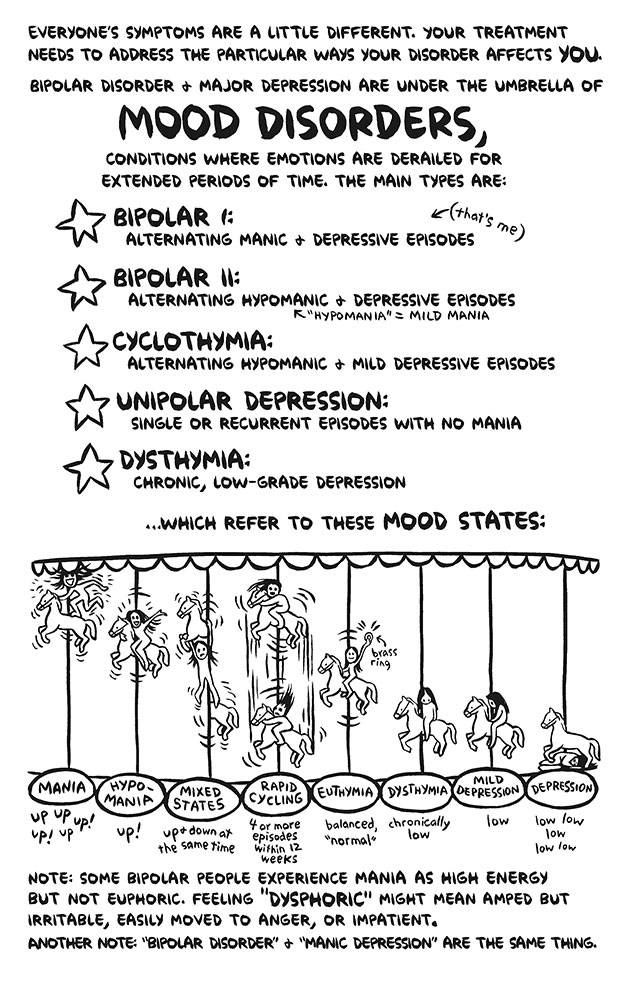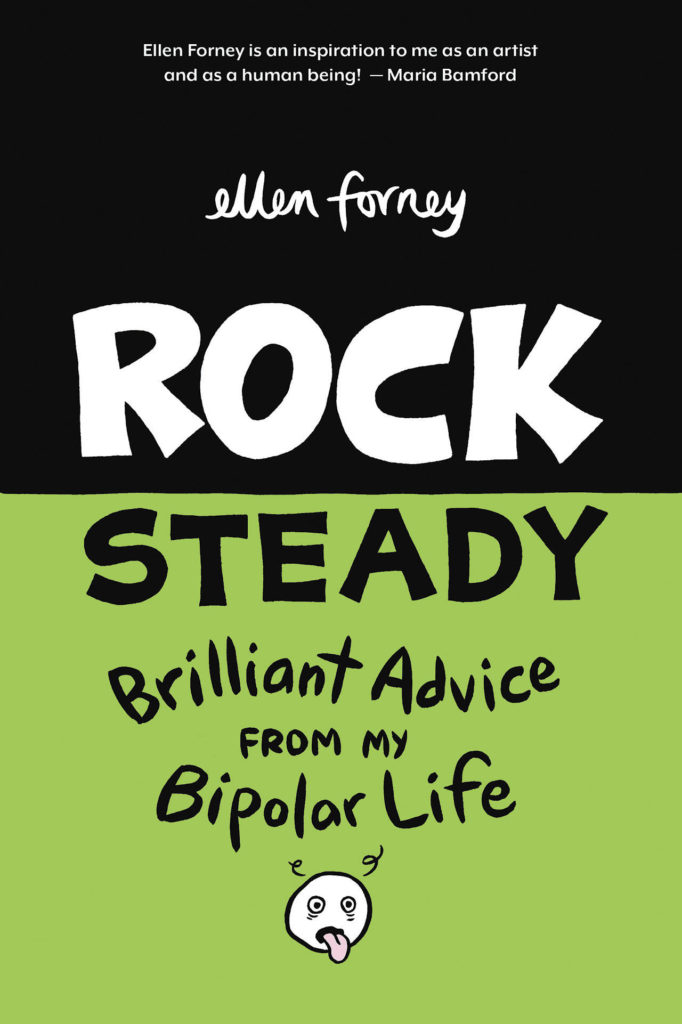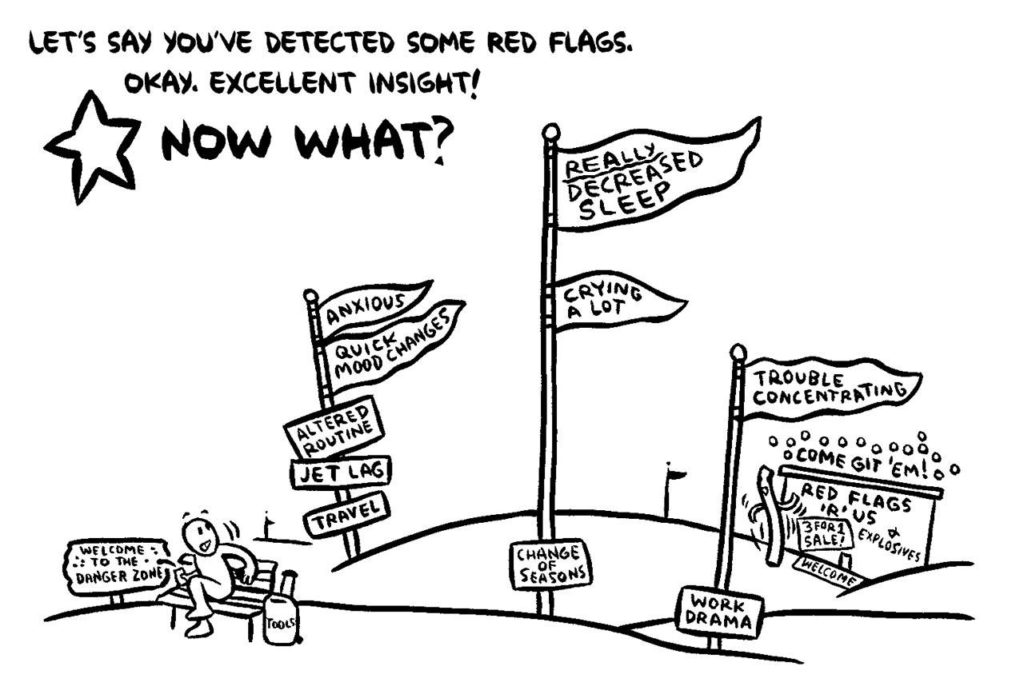Artist Ellen Forney, who teaches at Seattle’s Cornish College of the Arts, has published two graphic books, “Marbles Mania, Depression, Michelangelo and Me,” and her new graphic memoir, “Rock Steady: Brilliant Advice From My Bipolar Life.” She uses words, pictures, humor and intense honesty to provide insights in living with a bipolar diagnosis.
Forney, 50, was interviewed about her upcoming talk at 2 p.m. June 10 at the main branch of the Everett Public Library.
Two of her murals, “Walking Fingers,” and the 40-by-10-foot “Crossed Pinkies,” commissioned by Sound Transit, are displayed at the Capitol Hill light rail station’s west entry near Seattle Central Community College.
She recently curated an exhibit at the National Library of Medicine in Bethesda, Maryland, on graphic medicine, using comics to explore medical issues.
At Cornish she teaches studio comics, graphic novels and literature, and a class on graphics and medicine.
Your new book is entitled “Rock Steady.” Is that the place you now feel you are at in your life?
“Rock Steady” is kind of a pun. The point there is actually not that you get steady as in “rock steady” and unmoving, but your “rock” is off balance and then steady — in balance. It’s really a cycle of that. Rock and then steady, and then rock, and then steady. So part of my point is that there is no end place.
How does this balance work in your life?
There always are complicating things that have either gotten off track in our life or environment or something inside of us. For me it’s my bipolar disorder. But everybody gets thrown off track for different reasons. We all have to deal at some point with grief and loss and excitement and loss and gain, things exciting and things upsetting. None of us have a perfectly stable trajectory. Always some degree of finding our way and finding our grounding.
Your book deals at least in part with coping strategies. How did you find your way to them?
There are a lot of things that I figured out myself. Then a lot of things that I learned — breathing exercises and things in yoga. I chose things I found particularly helpful in finding balance.
You were diagnosed with bipolar disorder in 1998. How did you know that what you describe as your manic swing was something more than emotional highs that come with life?
I had gone to a counselor when I was depressed. So I went to her for a while, and then my mood started lifting and lifting, and she thought it would make sense for me to see a psychiatrist.
I think it was my second visit (with the psychiatrist she told me that I had bipolar disorder. It was just before I turned 30. That’s the beginning of (my first book) “Marbles: Mania, Depression, Michelangelo and Me: A Graphic Memoir.”
What happened after your diagnosis?
My journey to stability kind of came over the next four years. For example in “Rock Steady,” the metaphor of standing in the middle of the seesaw and trying to maintain balance there. How to stay upright in the middle? Sometimes that’s easier than others. Sometimes you might get thrown off. You have to remember you can pick yourself up and get back on.
There’s been talk about reducing the stigma over mental health issues for decades. But your approach — the graphics — somehow seems amazingly disarming to me. Was that your intent?
My whole approach for putting out this information is for it to be really approachable. And a lot of that is the medium that I work in — comics — is a very intimate and approachable medium. But one of the things I have to offer is the sense of humor in getting across these messages that are not inherently fun.
I looked at some of your comics and laughed and then found myself thinking: “Oh I shouldn’t laugh at that.” But it’s OK to laugh, right?
Exactly. Having a sense of humor is something that’s gotten me through a lot of hard times. Laughing at something allows for connection and it’s affirming. You can take it in more easily. Laughing is good for you. It decreases your anxiety.
What is a bipolar episode like, and I guess you would say it depends if it’s the up or down cycle?
It’s really different for everyone. My episodes would last for months. Some who have rapid cycling go up and down in the same day. Rapid cycling could be a couple times a week or a month. I know someone diagnosed with bipolar but mainly deals with depression.
The point there is it’s important to recognize that we all have different specific experiences of those struggles and different treatments we respond to.
So your question is what is the experience like? One of the things I really appreciate in being able to tell my story in comics is I can tell it in words and pictures. There’s so much that’s abstract and difficult to explain in words.
Our memory is inhibited. A feeling of lack of control. A frazzled feeling. Depression for me feels like a tangle of thorns. Mania is sort of like an electrical bundle of energy. And then also the feeling of a sense of separation from our usual life.
There’s a photo on your Facebook page of you interacting with a reader. The look on your face seems to be one of total understanding. Does this happen a lot?
Absolutely. One of the things I talk about in combating stigma is to come out with a very strong feeling of self-acceptance and letting the world know, “Look here I am and thriving to whatever degree with a mental illness.”
Even when a person is out about their disorder, there aren’t that many opportunities to talk about it. It doesn’t come up naturally in conversations. So many people have a personal connection to mental illness, whether it’s they themselves or friends, it is so close to so many people.
Those who turn out for author events often want to interact with the writer, to say why the book meant so much to them. Does the nature of your book make for an unusual book tour?
Yes. At signings there are only a couple minutes to interact. They can be very intense, short conversations. Because for so many people it really is a thing that is stigmatized and they don’t talk about. It’s pretty clear that I opened myself to being vulnerable. There are a lot of people who want me to know I’m not alone that I have company, too.
Do you feel bipolar disorder still has more stigma than depression?
Well I think it’s hard to say what is more and less stigmatized. I think mental illness is stigmatized in general. Depression is a more common experience than bipolar disorder. I think that depression is easier (to understand) for people who have never really experienced major depression than mania. I think one of the things I’m proud of in my work in “Marbles” and “Rock Steady” was I was able to depict and share a bit of what mania is like.
How can family and friends best be supportive?
I know it’s a question I get a lot that I wish I had a better answer to. Everybody experiences things differently. It’s difficult to make generalizations. That said, one is to make it clear that you’re there — like I am available to you. For somebody depressed, do you want to go for a walk?
But the best thing to do is a search. One place that I would look is the National Alliance on Mental Illness site. They have a page for family and friends, advice and stuff to do. Psychology Today has an article with 11 suggestions that are excellent.
Is there anything to be especially aware of?
It’s really, really, tempting to want to save someone, (to be) the one who says the inspiring thing to pull them out of it. My point is to not necessarily aim to save someone, but basically being there and being available to someone.
Sharon Salyer: 425-339-3486 or salyer@heraldnet.com.
If you go
Seattle artist Ellen Forney has chronicled her life with bipolar disorder in two autobiographical graphic books. She will speak at 2 p.m. June 10 at the Everett Public Library’s Auditorium, 2702 Hoyt Ave. in Everett. Call 425-257-7640.
Talk to us
> Give us your news tips.
> Send us a letter to the editor.
> More Herald contact information.




























